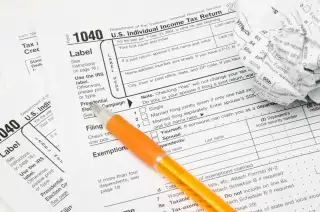This Tax Trick Could Be Incredibly Useful in 2017

Sometimes paying taxes now can help you avoid a bigger tax bill later on. That's the thinking behind paying Uncle Sam today to convert a traditional IRA to a Roth IRA that will give you tax-free withdrawals later.
Making the decision easier: A Roth IRA conversion comes with an unusual option to change your mind and undo it.
You can reverse a conversion you make in 2017 as late as Oct. 15, 2018. “It's about the only tax do-over you can get,” says CPA Jeffrey Levine of Ed Slott & Co.
One reason such a “recharacterization” could be particularly valuable this year is that Washington is working on proposals that may lower income tax brackets. That could wipe out the advantages of a conversion or make it cheaper to convert in another year or two rather than now. Congress could also embrace earlier proposals to speed up required withdrawals from some inherited IRAs (putting the kibosh on stretch IRAs), which could make it less attractive to do a Roth conversion as part of your estate planning.
Another consideration is that stock prices are at record levels. If the market falls sharply after you convert, reversing the transaction “can save you from paying taxes on value you no longer have,” says Levine. If you convert a $25,000 IRA this month, but it is worth only $20,000 at year-end, your tax bill next spring would still be based on the higher figure.
- Read more: 33 Smart Ways to Cut Your Taxes Right Now
To review the basics, a Roth IRA conversion lets you turn a pile of pretax money into after-tax savings. If your contributions were all tax-deductible, the full amount of the conversion is taxable income this year.
Roth conversions have become increasingly popular as more boomers retire with large amounts of pretax savings in their 401(k)s and IRAs. At age 70½, you must start taking required minimum distributions (RMDs) from those savings, which are taxable. Sizable RMDs may push you into a higher bracket. If you don’t need to tap those accounts for spending now, converting some of that money to a Roth IRA can reduce future RMDs and, in turn, future taxes.
“If you’ve recently stopped working, you may have one or more years in a low tax bracket, when you’re living off savings and have not yet claimed Social Security,” says Andrew Fisher, a financial advisor in San Francisco. “That can be great time to do a Roth conversion.”
A Roth conversion is not the right move for everyone. You are most likely to come out ahead if you are in a low tax bracket now but expect to end up in a higher bracket in the future. You should also have enough cash outside your pre-tax savings to cover the tax bill for the conversion.
Roth IRAs also offer valuable spending flexibility. If you need to tap that money, perhaps for a health care emergency, you don't have to worry about incurring income taxes or having that withdrawal used to determine if your Social Security benefits are taxable.
In addition, a Roth conversion can allow you to leave a larger legacy to your heirs, depending on how much you and they might pay in taxes. Under current law, your beneficiaries will have a choice of cashing in the money right away or to treat it as a stretch IRA—meaning they can make regular withdrawals over their lifetimes, which will give that money more time to grow.
If you are thinking you might want to undo a Roth conversion, pay attention to the mechanics. “The Roth conversion can go into a new or existing Roth IRA, but it’s generally best to convert to a new Roth if possible,” Levine says. That will make it easier if you later decide to recharacterize.
Indeed, it can even make sense to spread the money across multiple new Roth IRAs, each holding a separate type of investment, to potentially recharacterize only money-losing accounts, as financial-planning blogger Michael Kitces explains here.
If you reverse a Roth conversion, you can try it again later. You can reconvert recharacterized funds as long you wait until the calendar year after your original conversion or more than 30 days after your recharacterization, whichever is later.
So, for example, if you undo a 2017 conversion in November of this year, you could reconvert as soon as the beginning of January. If you undo a 2017 conversion next year before the Oct. 15 deadline, you could reconvert after 30 days.
It's not often that tax law gives you a guaranteed option to wipe the slate clean if you change your mind.